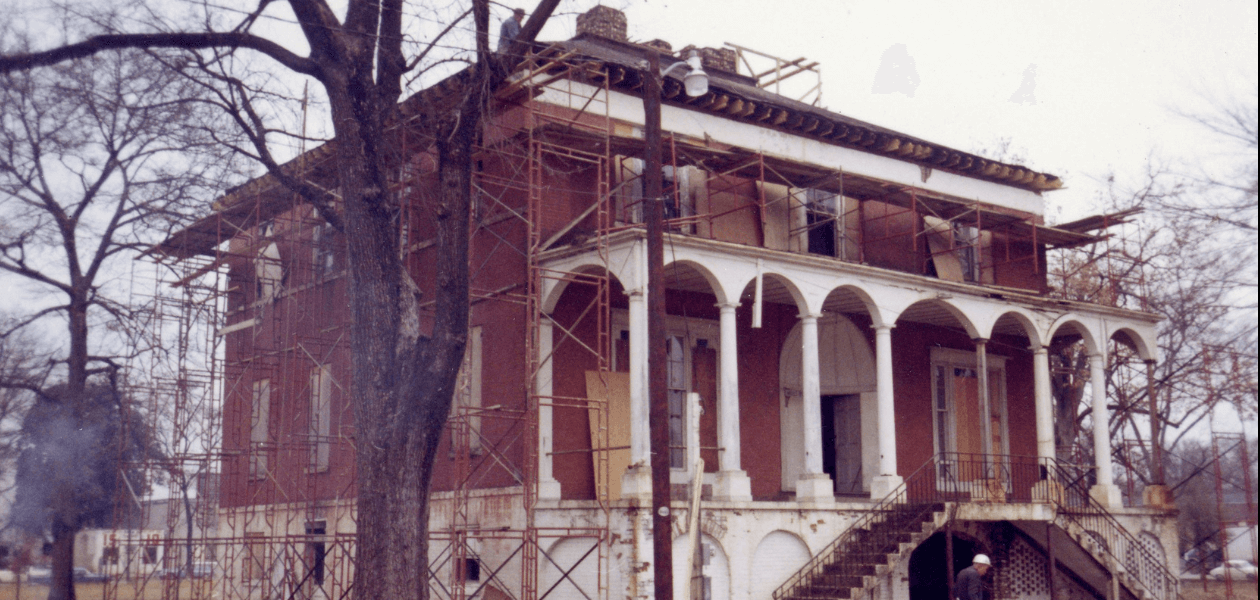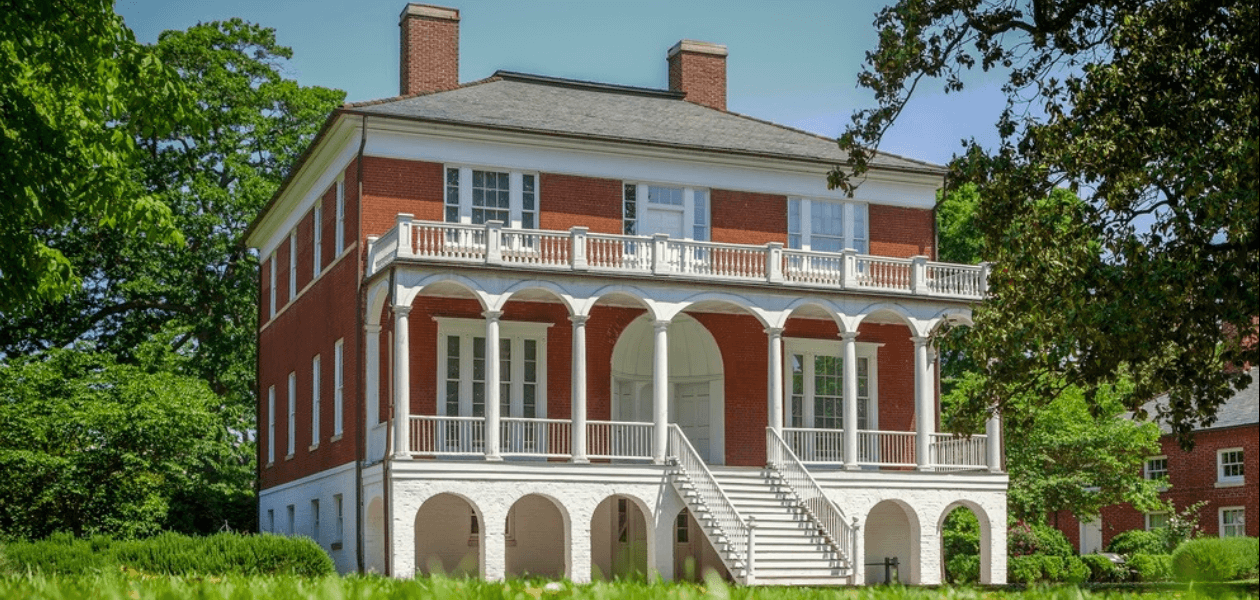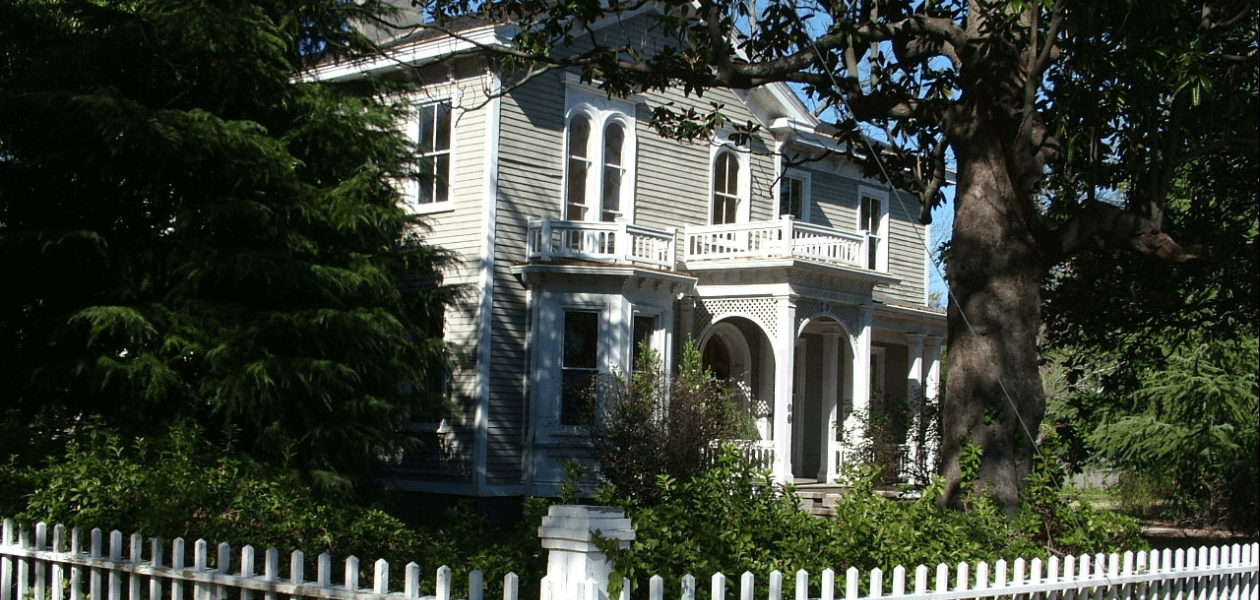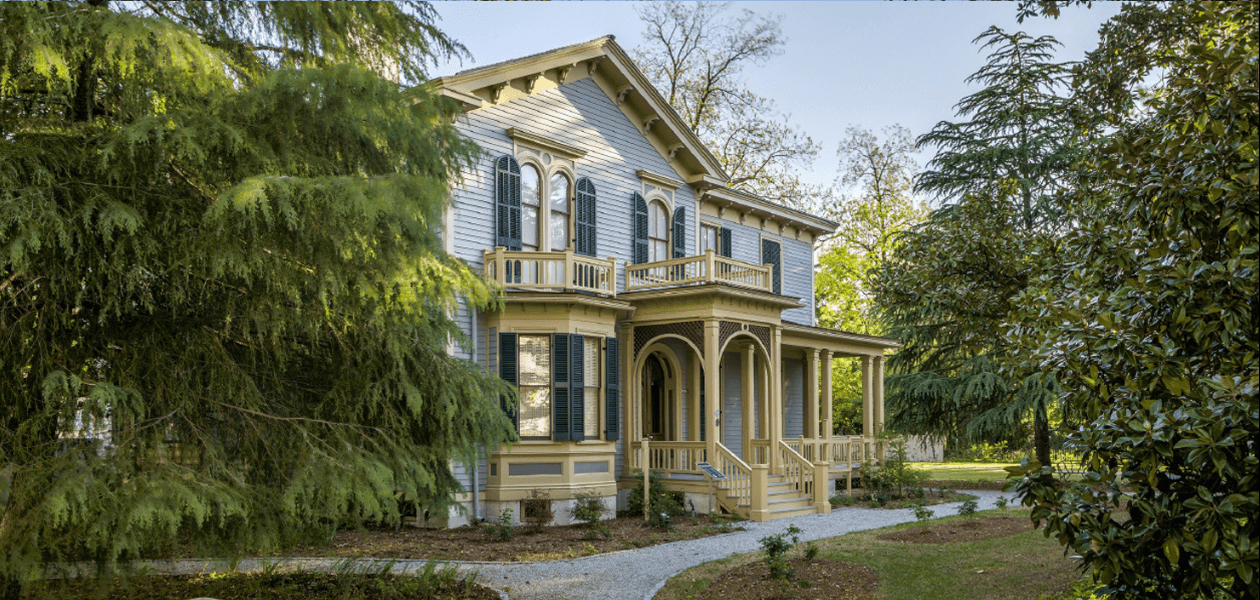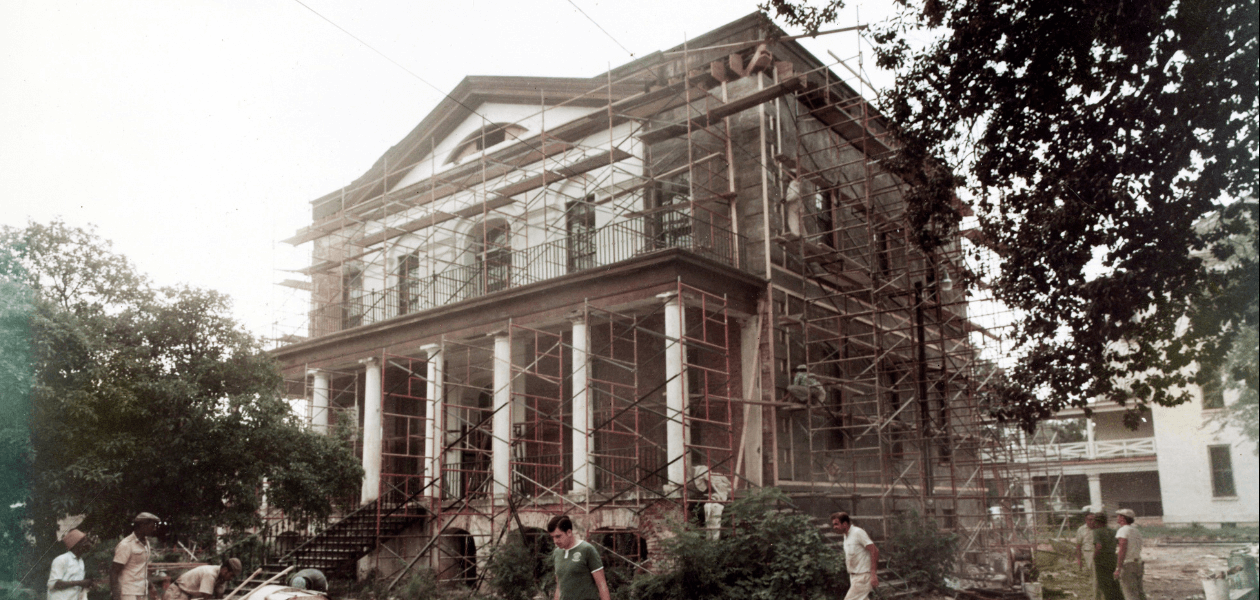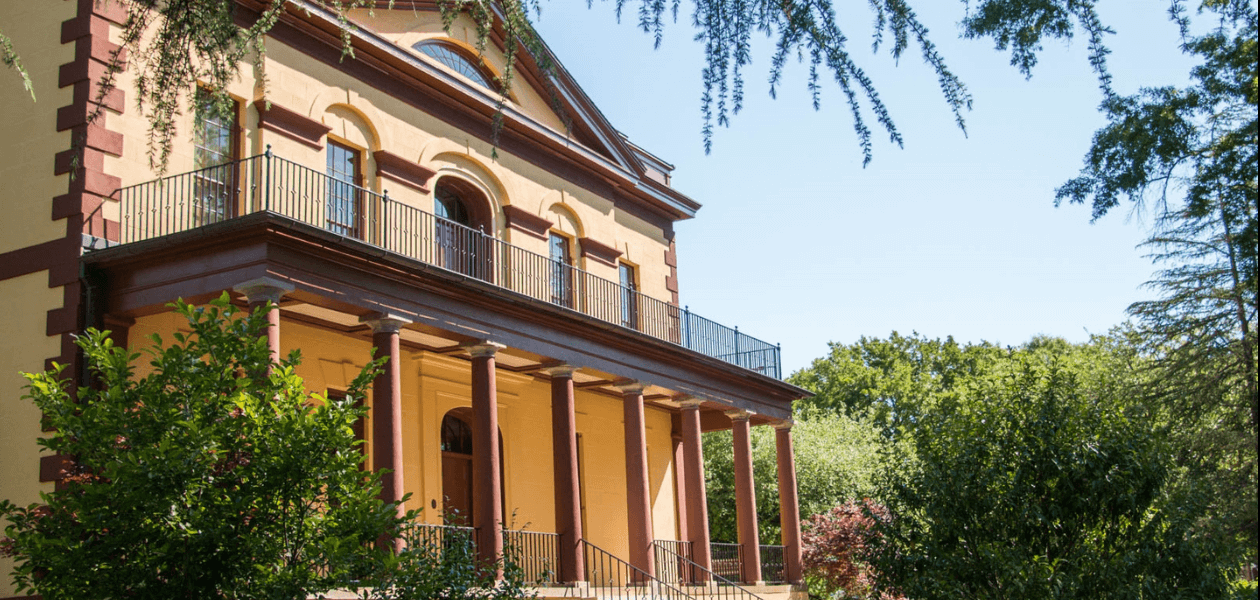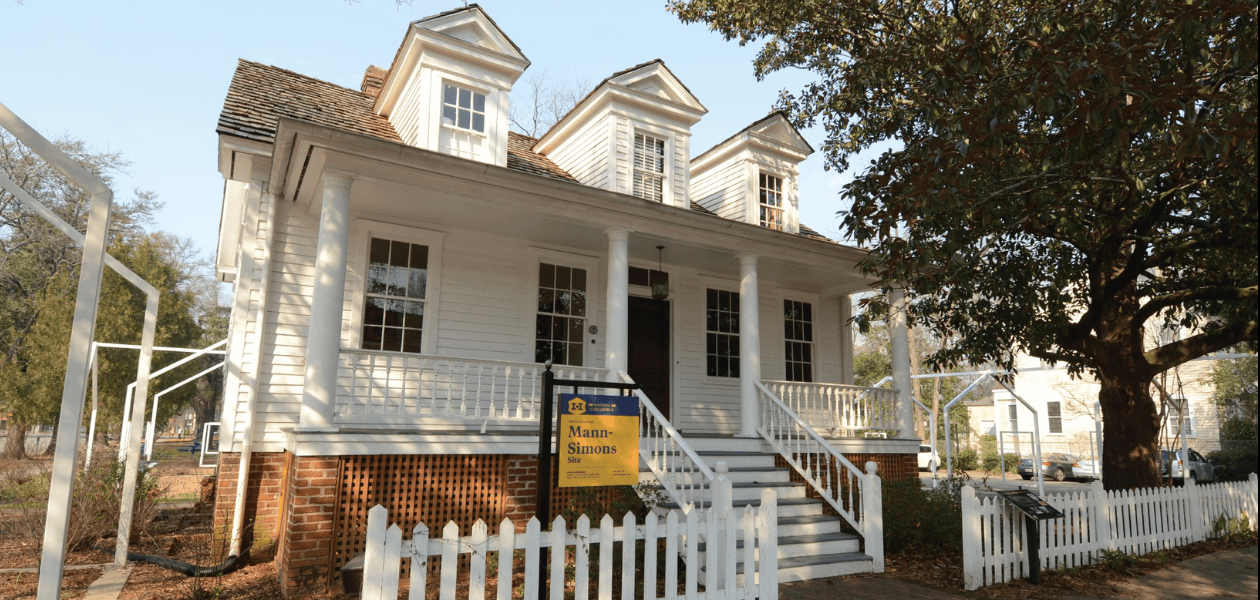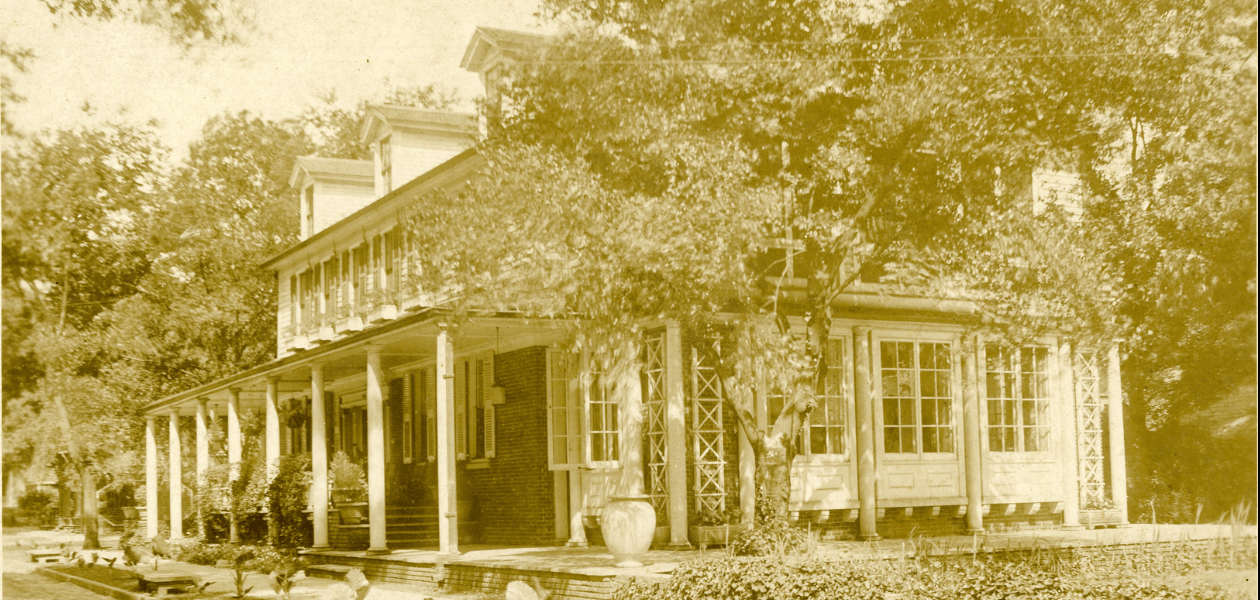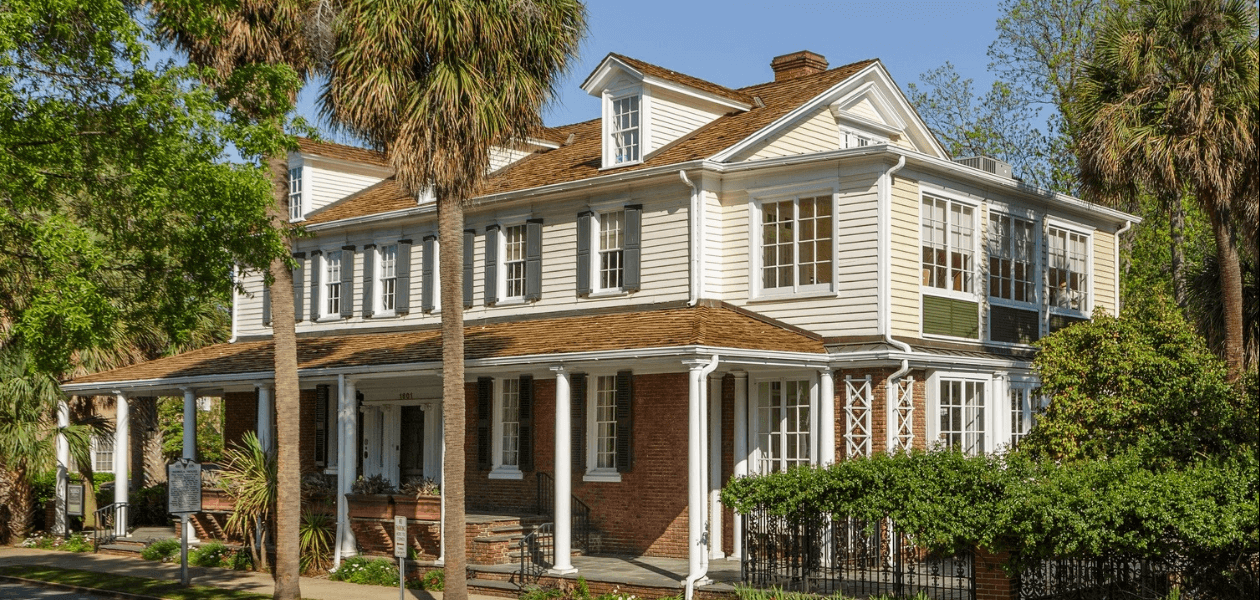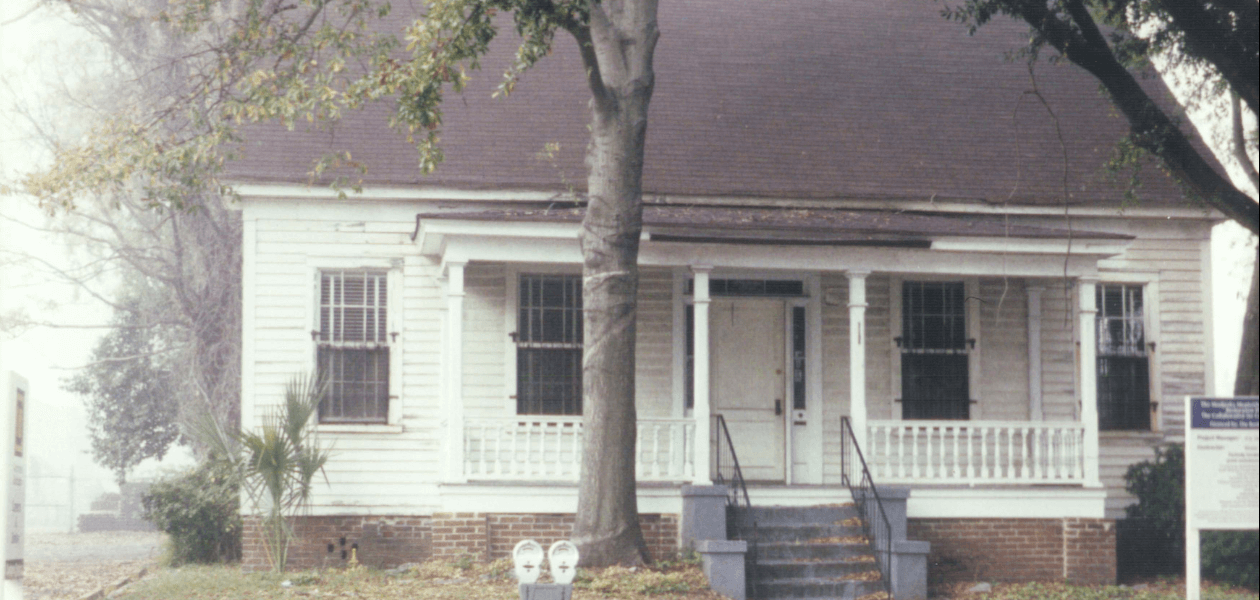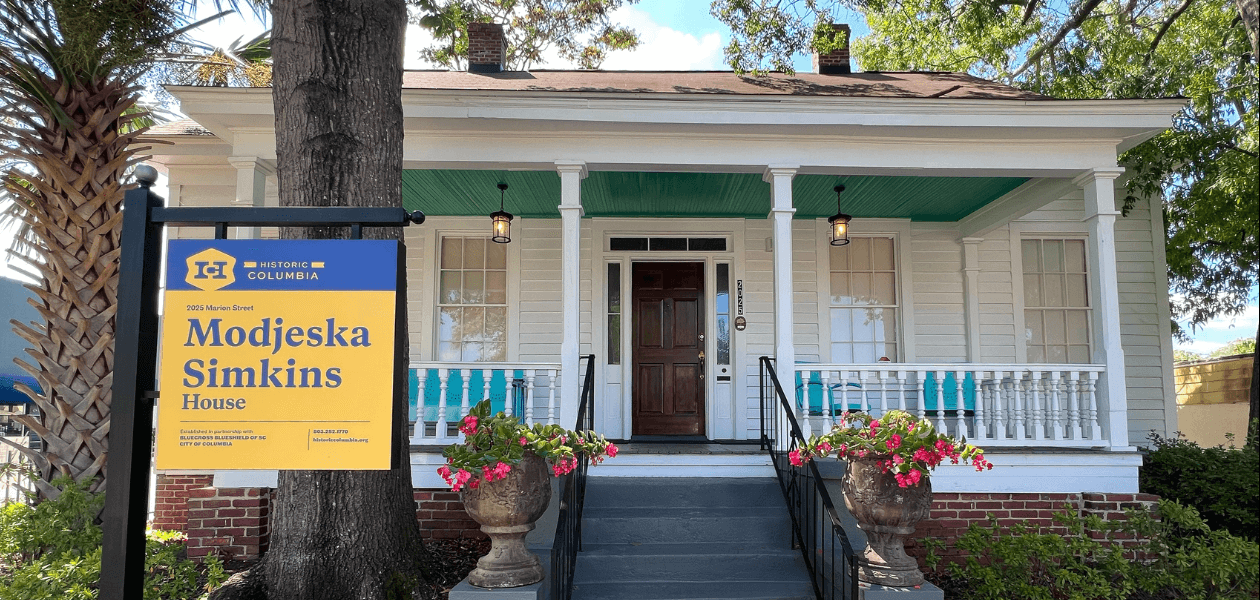Site Stewardship
Whether it is at the Seibels House—the only historic property for which it holds title—the City of Columbia or Richland County-owned historic sites, Historic Columbia operates the resources under its care as models of best practices in historic preservation. This approach guides daily operation and strategic initiatives and capital repairs. We practice at these places what we preach—and what we would gladly share with you for preserving your historic property. By remembering that we are but temporary stewards in a longer line of dedicated preservationists, our work is thoughtful, informed, and measured. Through it we write the history of the sites that bear our collective stories.
Robert Mills House
Robert Mills House (originally called the Ainsley Hall House), south elevation, looking northeast. Pictured in 1965 and present day.
One of only five National Historic Landmarks in Columbia, the Robert Mills House owes its existence today to earlier generations of preservationists. Before contractors wielded hammers, saws, and paint brushes from 1965 through 1967, preservationists brandishing checkbooks and thank-you cards knocked on doors, pounded floors, and called in favors to raise the funds needed to save the home from demolition. They succeeded and saved the ca.-1823 architectural marvel designed by a native South Carolinian who became the United States’ first federal architect. Today, Historic Columbia serves as the contractual steward of this City of Columbia-owned heritage tourism destination.
Museum of Reconstruction at the Woodrow Wilson Family Home
Woodrow Wilson Family Home (called the Woodrow Wilson Boyhood Home from 1933 through 2008), south elevation, looking northeast. Pictured in 2008 and present day.
Built in 1873 and narrowly escaping demolition in 1928, this former residence owes its preservation to the remarkable story of a 14-year-old boy who later became the 28th President of the United States and the first southerner to hold the office since before the Civil War, Woodrow Wilson. Four generations after preservationists established the house as a tribute to the creator of the League of Nations, a precursor to the United Nations, Historic Columbia meticulously transformed the Richland County-owned site into a 21st-century museum. This museum now offers a fresh perspective on the Reconstruction era, showcasing its lessons and legacy through comprehensive rehabilitation of the property.
Hampton-Preston Mansion
Hampton-Preston Mansion, south elevation, looking northwest. Pictured in 1969 and present day.
One of Columbia’s oldest remaining properties, this Richland County-owned historic site has survived war, college students, and post-World War II commercialization to emerge as a cultural destination reborn through preservation advocacy and horticultural reinvestment—proving that historic preservation takes into account not only buildings but the context in which they stand.
Mann-Simons Site
Mann-Simons Site (originally called Mann-Simons Cottage), south elevation, looking north. Pictured in 1975 and present day.
Grassroots preservation in 1970 prevented this incredibly important link to Columbia’s past from being reduced to a pile of rubble in the name of progress in the form of a parking lot. Opened in 1978 and transformed through unprecedented archaeological research during the mid-2010s, the City of Columbia-owned property today interprets the evolution of one family from the bonds of slavery through the latter stages of the civil rights movement. Through ghost structures erected on the location of buildings historically standing on the tract of land Historic Columbia interprets the story of what was not preserved.
Seibels House
Seibels House, south elevation, looking northwest. Pictured in 1921 and present day.
Erected around 1796 and substantially renovated to look older through a Colonial Revival make-over during the late 1910s, this former residence is accepted as Columbia’s oldest remaining building. Gifted to Historic Columbia in 1984, this property serves as the hub for preservation, parties, and passing time in its skillfully curated gardens. As the only property Historic Columbia owns, grants, gifts, and special event income fuels the preservation of this remarkable link to the capital city’s nascent years.
Modjeska Monteith Simkins House
Modjeska Simkins House, east elevation, looking west. Pictured in early 2000s and present day.
The former home of South Carolina’s matron of Civil Rights has benefited from a host of preservation-minded individuals and entities. After being gifted to the City of Columbia by Blue Cross Blue Shield, the property became the third city-owned site for which Historic Columbia serves as contractual steward. Under this arrangement, significant support through federal historic preservation grants has transformed the site’s main house and rear building, granting the public insight into the role Modjeska Simkins played in the early civil rights movement.
Reach Out to Our Preservationists
Contact us today to learn more about more about the preservation of historic sites.
